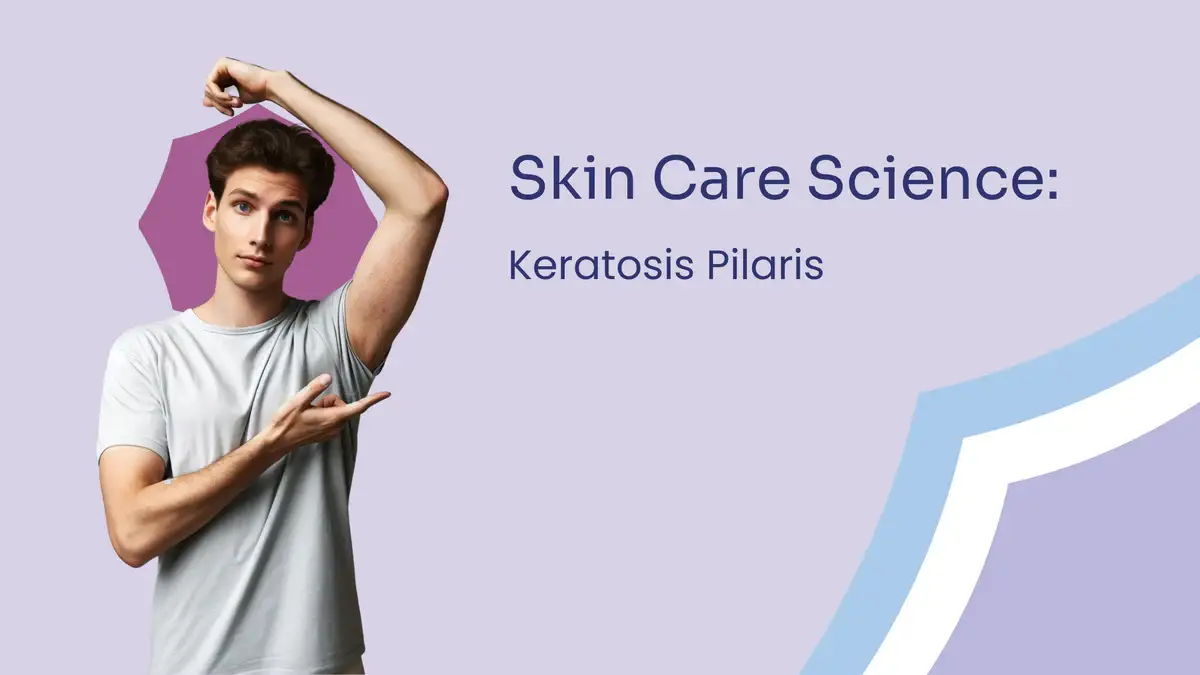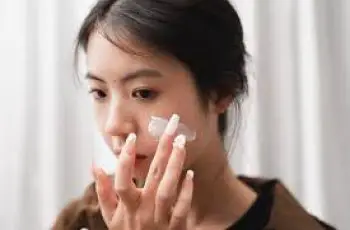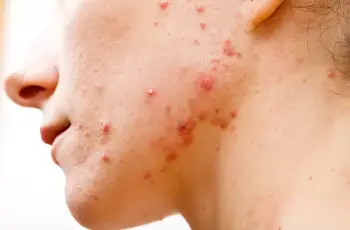
The Science of Keratosis Pilaris (Chicken Skin)
Keratosis pilaris (KP), often known colloquially as “chicken skin,” is a common source of cosmetic concern for, though it is not a dangerous condition. This blog aims to demystify KP by explaining its scientific causes, exploring effective treatments, and addressing common concerns related to this skin condition. We’ll delve into the science of keratosis pilaris, how it can be managed with skincare products and professional treatments, even though there is no permanent cure.
To make sure you only buy the right products for your skin type, be sure to take the Baumann Skin Type Quiz for free today!
What is Keratosis Pilaris
Keratosis pilaris is an extremely common genetic skin condition characterized by small, hard bumps on the skin. The bumps are often light-colored and appear on the upper arms, thighs, cheeks, or rear-end. They usually don’t hurt or itch. KP results when keratin, a protein that protects skin from harmful substances and infection, builds up and blocks the opening of hair follicles. Some studies have found that the rate of this condition can be higher than 50% in teenagers, and 80% in teenage girls specifically. (5)
The papules from this condition can sometimes lead to varying degrees of redness and itching. During adolescence, the prevalence and intensity of KP may increase due to hormonal changes, suggesting a possible hormonal influence on the condition.
How to treat keratosis pilaris
While there is no permanent cure for keratosis pilaris, several treatments can help manage its appearance. Treatment focuses on softening the keratin deposits in the skin and minimizing cosmetic discomfort. The first step in managing KP is understanding that each treatment may work differently depending on individual skin types. In general, I recommend a good exfoliant and a good moisturizer to treat KP.
For tailored recommendations, take the Baumann Skin Type through our specialized quiz.
Exfoliating ingredients for keratosis pilaris
Effective management of Keratosis Pilaris often begins with the right exfoliating regimen. Here are some options that can help smooth the skin’s surface by removing excess keratin:
Alpha-Hydroxy Acids (AHAs):
Glycolic Acid: One of the most effective AHAs for keratosis pilaris, it penetrates deeply to help dissolve the glue-like substance that holds dead skin cells together.
Lactic Acid: Not only exfoliates but also moisturizes, making it perfect for sensitive skin types prone to dryness.
Mandelic Acid: A gentler AHA option that exfoliates without causing significant irritation.
Beta-Hydroxy Acids (BHAs):
Salicylic Acid: Known for its ability to penetrate into pores and dissolve the buildup of keratin, salicylic acid is a good choice for those with keratosis pilaris on oilier skin areas or those prone to acne.
Physical Exfoliants:
Jojoba Beads: These are smooth, biodegradable beads that provide gentle physical exfoliation without the harshness associated with rougher scrubs.
Microfiber Cloths: Using a soft microfiber cloth can help gently exfoliate the skin when used in conjunction with a cleanser.
Enzymatic Exfoliants:
Papain (Papaya Enzyme): This fruit enzyme helps break down the keratin in skin cells in a gentle manner, suitable for sensitive skin.
Bromelain (Pineapple Enzyme): Works similarly to papain, offering a mild exfoliation that’s effective at smoothing the skin’s surface.
These are some of my favorite exfoliating products, all of which can be helpful in treating keratosis pilaris:
Moisturizing ingredients for Keratosis Pilaris
Proper hydration is crucial in the treatment of keratosis pilaris to help reduce the appearance of bumps and improve overall skin texture. Here are several moisturizers and their active components that can aid in this process:
Urea: Particularly effective for severely dry skin, urea at higher concentrations can hydrate and help dissolve tough keratin plugs.
Alpha-Hydroxy Acids as Moisturizers: A form of lactic acid or glycolic acid that combines exfoliation with intense hydration. AHA’s do not strip oils or other moisture from the skin, meaning they are a good exfoliant choice for dry skin types.
Ceramides: These strengthen the skin’s barrier, preventing moisture loss and maintaining hydration, essential for KP-affected skin.
Natural Oils:
Coconut oil: Known for its moisturizing properties, it also has anti-inflammatory benefits, making it a popular choice for soothing keratosis pilaris.
Shea butter: Rich in fatty acids and vitamins, shea butter is highly effective in conditioning and softening the skin.
Other Hydrating Ingredients:
Hyaluronic Acid: Draws moisture into the skin, helping to keep it hydrated and plump.
Glycerin: A humectant that attracts water to the skin, helping to keep the surface hydrated and less prone to roughness.
Procedures for Keratosis Pilaris
For more stubborn cases, professional dermatologic treatments may be considered:
Microdermabrasion and Dermabrasion: These procedures deeply exfoliate the skin, removing dead cells and smoothing the surface.
Chemical Peels: Application of solutions like glycolic acid to deeply exfoliate and reduce keratin buildup.
Laser Treatments and Blue Light Therapy: These can help to reduce inflammation and redness associated with more visible cases of keratosis pilaris.
Dangers of Keratosis Pilaris
It is important to note that KP is a benign condition. It is safe and there are no dangers associated with this condition. The primary concerns are aesthetic, and for some, the texture and appearance of their skin may cause psychological distress. Addressing the appearance of skin can significantly enhance self-esteem and decrease any social concerns associated with visible skin bumps.
Is there a cure for keratosis pilaris?
Unfortunately, there is no permanent cure for KP; however, with regular treatment, the condition can be effectively managed and its appearance minimized. Many find that their symptoms improve with age, particularly as they continue consistent skincare regimens tailored to their skin type.
Keratosis pilaris, though medically harmless, can be a persistent skincare challenge. Understanding your specific Baumann Skin Type can guide you to the most effective treatments and products. Remember, a combination of regular exfoliation and intensive moisturizing is key to smoothing the skin and reducing the bumps caused by KP. Though it may require ongoing attention, with the right approach, you can achieve clearer, more comfortable skin.


